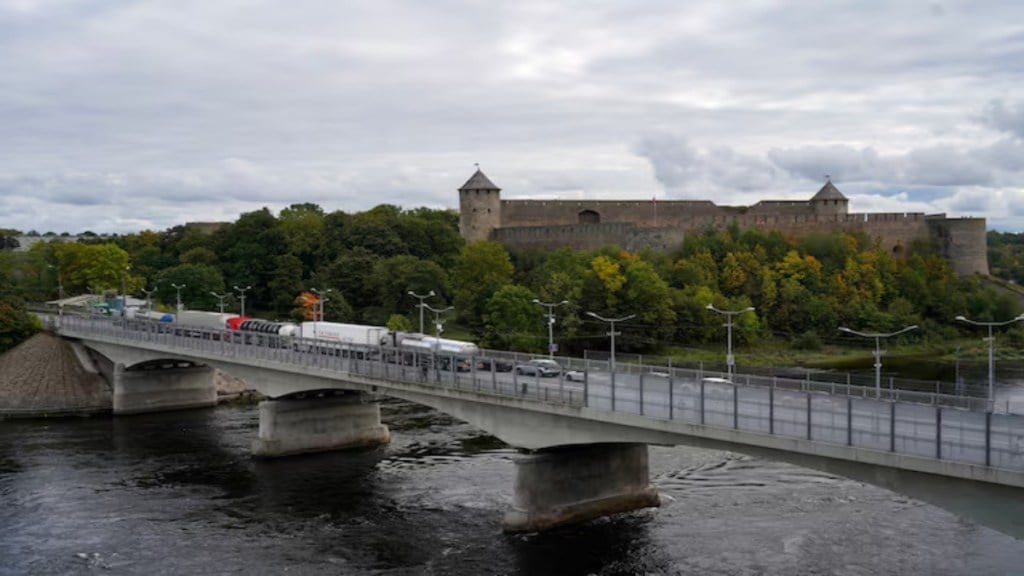The conflict between Ukraine and Russia, now in its second year without a resolution, has not only strained relations between the two countries but has also aggravated tensions with Russia’s neighbouring nations.
Recently, a new dispute has emerged between Russia and Estonia, centered around the removal of navigation markers on the Narva River, which forms part of the border between the two countries. This incident comes amidst Estonian Prime Minister Kaja Kalas’s vocal support for Ukraine, advocating for NATO intervention against Russia in the ongoing war. As Russia’s actions continue to draw international attention, the situation on the Narva River highlights the broader geopolitical complexities in the region.
Key Points:
Removal of Navigation Buoys: During the Ukraine war, Russia and Estonia recalled their ambassadors in protest. After President Vladimir Putin came to power for the fifth time, Russia removed 24 out of 50 navigation buoys from the Narva River, which demarcates the border between Estonia and Russia. This move has raised concerns about border security and territorial integrity.
Estonian Response: Estonian Prime Minister Kaja Kallas has condemned Russia’s actions, describing them as a “border incident” and expressing concern over Russia’s intentions. Estonia views such incidents as attempts by Russia to instil fear and create insecurity along its borders.
According to reports in the public domain, the buoys are strategically placed on the border river to prevent foreign ships from entering the Estonian waters.
“We are taking information about the exact circumstances. But Russia does such incidents on the border to increase fear and tension. Such incidents create a feeling of insecurity for us. “We see a widespread pattern of this.”
International Reaction: NATO members, including Estonia, have expressed outrage over Russia’s actions, viewing them as attempts to destabilize regional security.
The Russian Defense Ministry’s publication of a proposal to modify maritime borders in the Baltic Sea further fuelled tensions, leading to swift condemnation from neighbouring countries.
Russian Perspective:
Russia’s Foreign Ministry has stated that its actions regarding the Baltic Sea borders are in accordance with international law. The Defense Ministry’s proposal to amend maritime borders was attributed to confusion over historical maps and was not politically motivated.
Russian Foreign Ministry spokesperson Maria Zakharova has responded regarding Russia’s Baltic Sea borders. Maria Zakharova said last week on Thursday that “Russia’s Baltic Sea borders should be in accordance with international law and the Defense Ministry’s work to clarify the border was of a technical nature.”
Strategic Implications: The Narva River is a vital shipping route for Estonia, and any disruption due to territorial disputes could have significant economic repercussions. Russia’s opposition to floating markers on the river raises concerns about its intentions and could be seen as a strategic move to intimidate Estonia and its NATO allies.
The escalating tensions between Russia and Estonia over the Narva River navigation buoys highlight the fragile nature of border disputes in the region. As Russia’s actions continue to provoke international condemnation, the need for diplomatic dialogue and adherence to international norms becomes increasingly important. The situation underscores the broader challenges faced by countries in the region as they navigate complex geopolitical dynamics and strive to maintain peace and stability.

